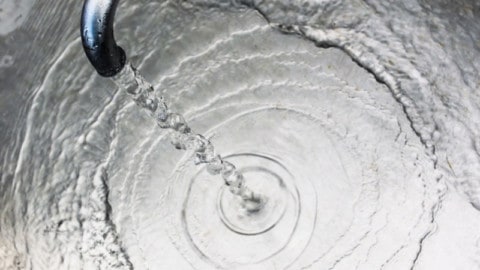By Scott Michaels, Zetco Valves
With pump installations becoming a lot more sophisticated these days, chances are that you are installing more non-return valves.
Non-return valves (check valves) are mechanical valves that permit gases or liquids to flow in only one direction, preventing flow from reversing down the line. They are classified as one-way directional valves.
Fluid flow in the desired direction opens the valve, while backflow forces the check valve to close. Most check valves contain a flat disc that is slightly larger in diameter than that of the port.
Flow indicators on the side of the body indicate the direction of the flow for correct installation.
‘Non-return valve’ is a generic term in that they are available in many different versions, such as spring or swing, and are also available in a wide variety of materials, such as brass, bronze and stainless steel, and with numerous end connections, such as threaded or flanged.

Spring check valve
Spring check valves
Spring check valves have a disc held in place by a spring, which means they can operate in either a vertical or horizontal mounting position because they do not rely on flow pressure or direction to function.
The advantage of the spring check is that they have a soft seat which allows for a perfect seal. Seats are available in a variety of materials such as Nylon and FKM. This means that they can be used in a variety of applications such as hot water.
Swing check valves
Swing check valves have a disc which swings into position, and can operate in either horizontal or vertical (upward flow) positions. Movement through the line automatically swings the disc open to allow full flow, so swing check valves must be installed with normal flow opening the disc.
Should reverse flow occur, the reversed pressure and the weight of the disc closes the disc back against the seat and back-flow is immediately stopped.
This type of check valve offers minimal flow restriction allowing full flow to be achieved through the valve.

Swing check valve
It is important to note that the sealing is often metal to metal so a perfect seal is not always guaranteed.
Horizontal Lift check valves
Lift check valves work automatically with line pressure in a horizontal position only, as the bonnet is positioned vertically above the valve.
Like a globe valve, with its indirect line of flow, lift check valves are flow-restricting, and so are generally used as a companion to globe valves.
Line pressure lifts the disc, and flow is allowed to occur. When flow reverses, the disc falls back onto its seat and immediately cuts off the flow, preventing backflow from occurring. This makes lift check valves ideal for high temperature applications.
WaterMark
Due to the fact that WaterMarking of pump sets and other installations has become mandatory, it is important to note that all of the valves discussed in this article are available in a WaterMarked version.
This ensures that all components comply with the relevant Australian Standard. The applicable Australian Standard is AS 1628, Water supply—Metallic gate, globe and non-return valves.
The accompanying images are the intellectual property of Zetco Valves Pty Ltd and must not be reproduced for any other purpose without Zetco’s prior written permission.




















